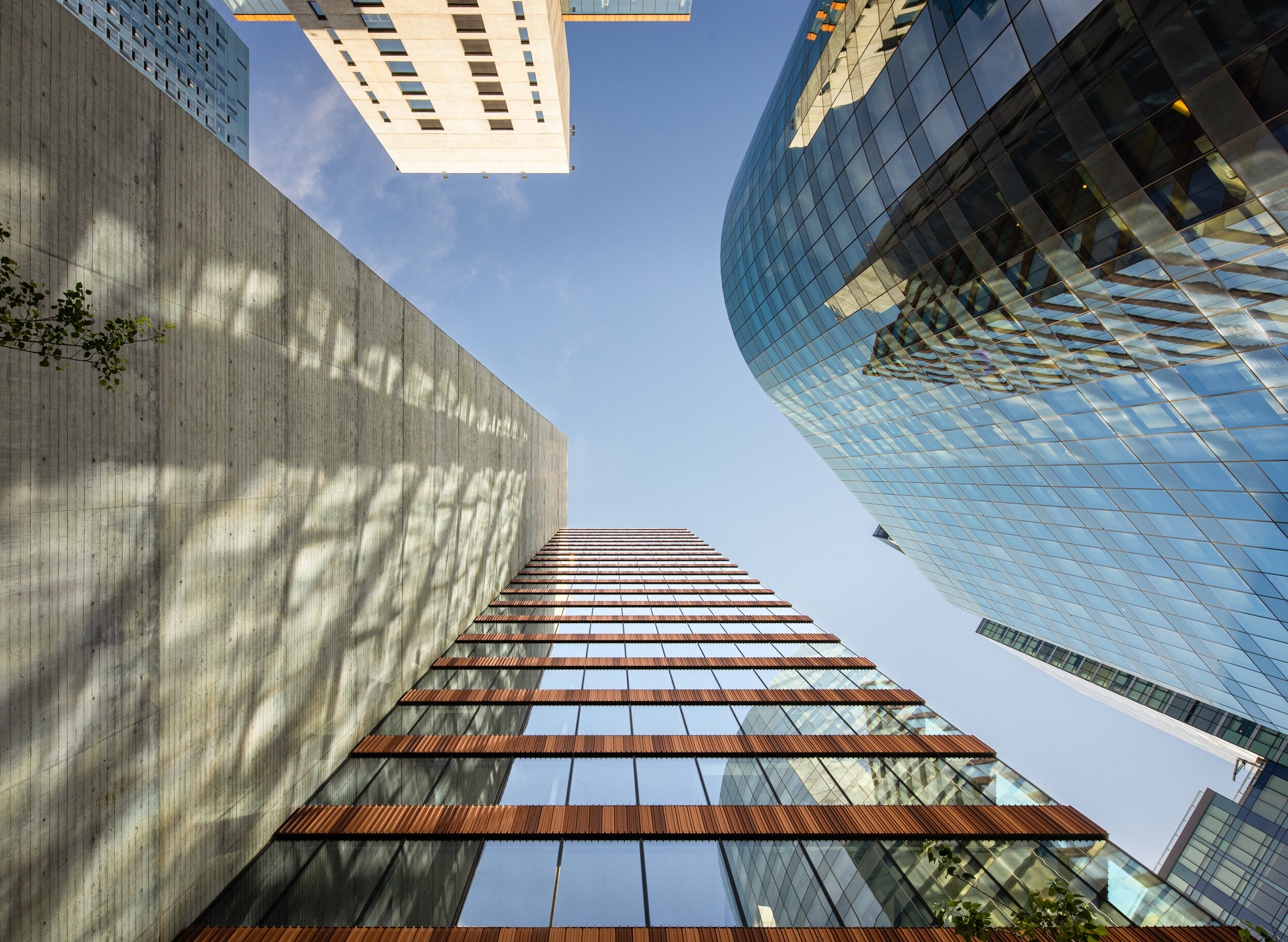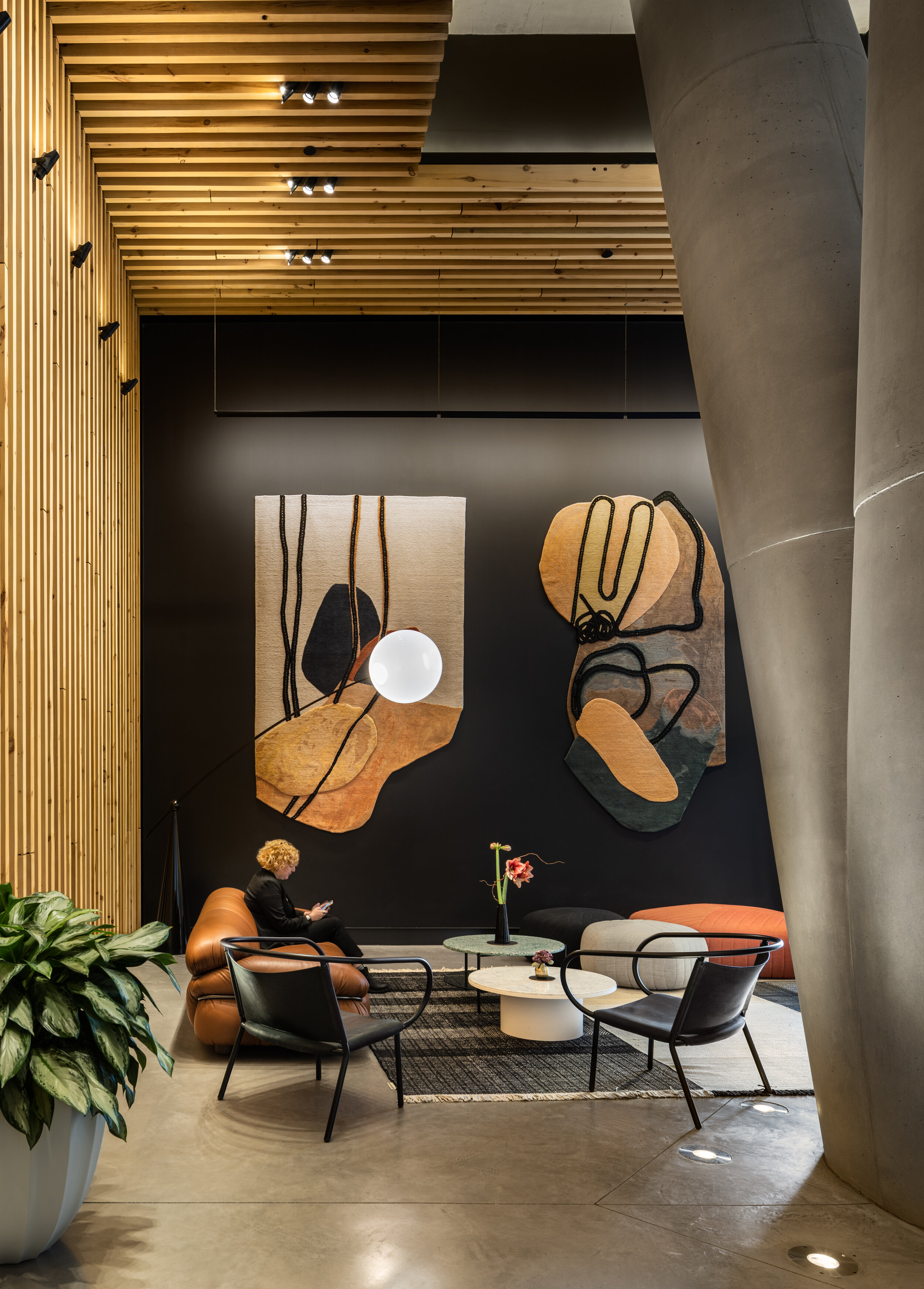
PROJECT / COMMERCIAL
The JACX
As the first ground-up commercial building in Long Island City in over a decade, The JACX pioneers contemporary work culture into this emerging mixed-use neighborhood by promoting wellness and sustainability through dynamic architectural design. One subway stop from Manhattan, The JACX is comprised of 1.1 million square feet of new office space and 50,000 square feet of retail. The development is characterized by two identical 26 story towers featuring raw concrete and textured earth-colored terra cotta panels that define it amongst the predominantly all glass surrounding buildings.
Address 2807 Jackson Avenue
City Long Island City, New York
Year 2020
Size 1.2 million sq ft
Client Tishman Speyer
Awards
AMERICAN SOCIETY OF LANDSCAPE ARCHITECTS | Landscape Architectural Design, Merit Award, 2022
ARCHITIZER | A+ Awards, Office Building High-Rise, Winner, 2021
INTERIOR DESIGN MAGAZINE | NYCxDESIGN Awards, Commercial Lobby/Amenity Space, Winner, 2021
INTERIOR DESIGN MAGAZINE | NYCxDESIGN Awards, Outdoor Space, Finalist, 2021
DRIVENxDESIGN | New York Design Awards, Commercial Constructed, Gold Winner, 2020
AIA Long Island | Archi Awards, New Commercial Facility, 2020
DRIVENxDESIGN | New York Design Awards, Commercial Unbuilt, Silver Winner, 2017


LIC’s Industrial Past
The JACX is projected LEED Silver for the core and shell and has a façade composed of high-performance glass windows and multi-toned terracotta spandrel panels in a nod to the neighborhood’s history of industrial manufacturing.
In creating a dynamic façade, the multi-color terracotta rainscreen system allows air to circulate behind the structure to provide pressure equalization, preventing water from being drawn into the building.
The Elevated Quad
Leading the way in merging wellness with workplace design, The JACX towers house contemporary office space overlooking a 1.5-acre landscaped park on the 5th Floor roof terrace, creating a connection to the natural environment and providing nontraditional space for building inhabitants to work, socialize, and regroup.






















